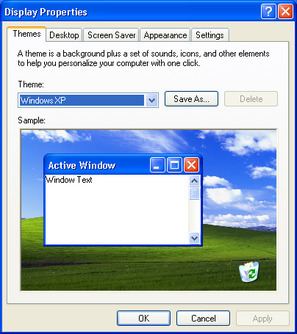 | ||
Included with Every version of Windows except the first release of Windows Embedded | ||
The Control Panel is a part of the Microsoft Windows, in older versions, which allows users to view and manipulate basic system settings and controls via applets, such as adding hardware, adding and removing software, controlling user accounts, and changing accessibility options. Additional applets can be provided by third party software.
Contents
The Control Panel has been an inherent part of the Microsoft Windows operating system since Windows 2.0, with many of the current applets being added in later versions. Beginning with Windows 95, the Control Panel is implemented as a special folder, i.e. the folder does not physically exist, but only contains shortcuts to various applets such as Add or Remove Programs and Internet Options. Physically, these applets are stored as .cpl files. For example, the Add or Remove Programs applet is stored under the name appwiz.cpl in the SYSTEM32 folder.
In recent versions of Windows, the Control Panel has two views, Classic View and Category View, and it is possible to switch between these through an option that appears on either the left side or top of the window.
Many of the individual Control Panel applets can be accessed in other ways. For instance, Display Properties can be accessed by right-clicking on an empty area of the desktop and choosing Properties.
The classic view consists of shortcuts to the various control panel applets, usually without any description (other than the name). The categories are seen if the user use "Details" view.
The category view consists of categories, which when clicked on display the control panel applets related to the category. In Windows Vista, the category used applets below the name of the category.
The Control Panel can be accessed quickly by typing control in the Run dialog box (⊞ Win+R).
On Windows 10, Control Panel is partially deprecated in favor of Settings app, which was originally introduced on Windows 8 as "PC Settings" to provide a touchscreen-optimized settings area using its Metro-style app platform. Some functions, particularly the ability to add and remove user accounts, were moved exclusively to this app on Windows 8 and cannot be performed from Control Panel.
List of Control Panel applets
The applets listed below are components of the Microsoft Windows control panel, which allows users to define a range of settings for their computer, monitor the status of devices such as printers and modems, and set up new hardware, programs and network connections. Each applet is stored individually as a separate file (usually a .cpl file), folder or DLL, the locations of which are stored in the registry under the following keys:
- HKLM\SOFTWARE\Microsoft\Windows\Current Version\Control Panel\Cpls
This contains the string format locations of all .cpl files on the hard drive used within the control panel. - HKLM\SOFTWARE\Microsoft\Windows\Current Version\Explorer\ControlPanel\Namespace
This contains the location of the CLSID variables for all the panels not included as cpl files. These are commonly folders or shell applets, though Windows Vista allows physical programs themselves to be registered as well. The CLSID then allows items such as the icon, infobox and category to be set and gives the location of the file to be used.
The control panel then uses these lists to locate the applets and load them into the control panel program (control.exe) when started by the user. In addition to using the control panel, a user can also invoke the applets manually via the command processor. For instance, the syntax "Control.exe inetcpl.cpl" or "control.exe /name Microsoft.InternetOptions" will run the internet properties applet in Windows XP or Vista respectively. While both syntax examples are accepted on Windows Vista, only the former one is accepted on Windows XP.
Peripheral devices
These are options in the control panel that show devices connected to the computer. They do not actually offer a direct interface to control these devices, but rather offer basic tasks such as removal procedures and links to wizards (Printers & faxes is the exception).
Such applets include:
Third-party applets
Third-party software vendors have released many applets. Although it is impossible to mention all of them, some of them are listed here:
